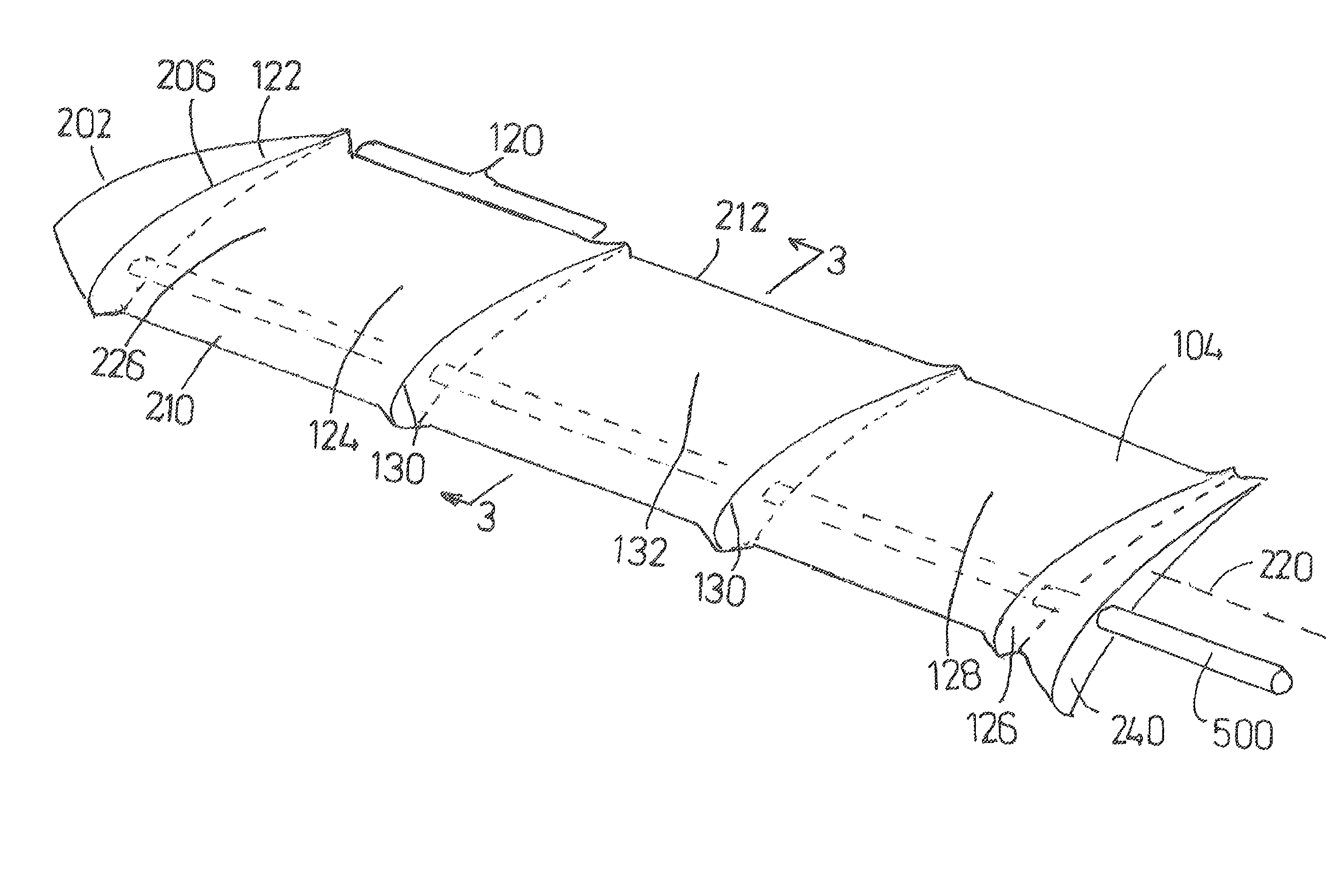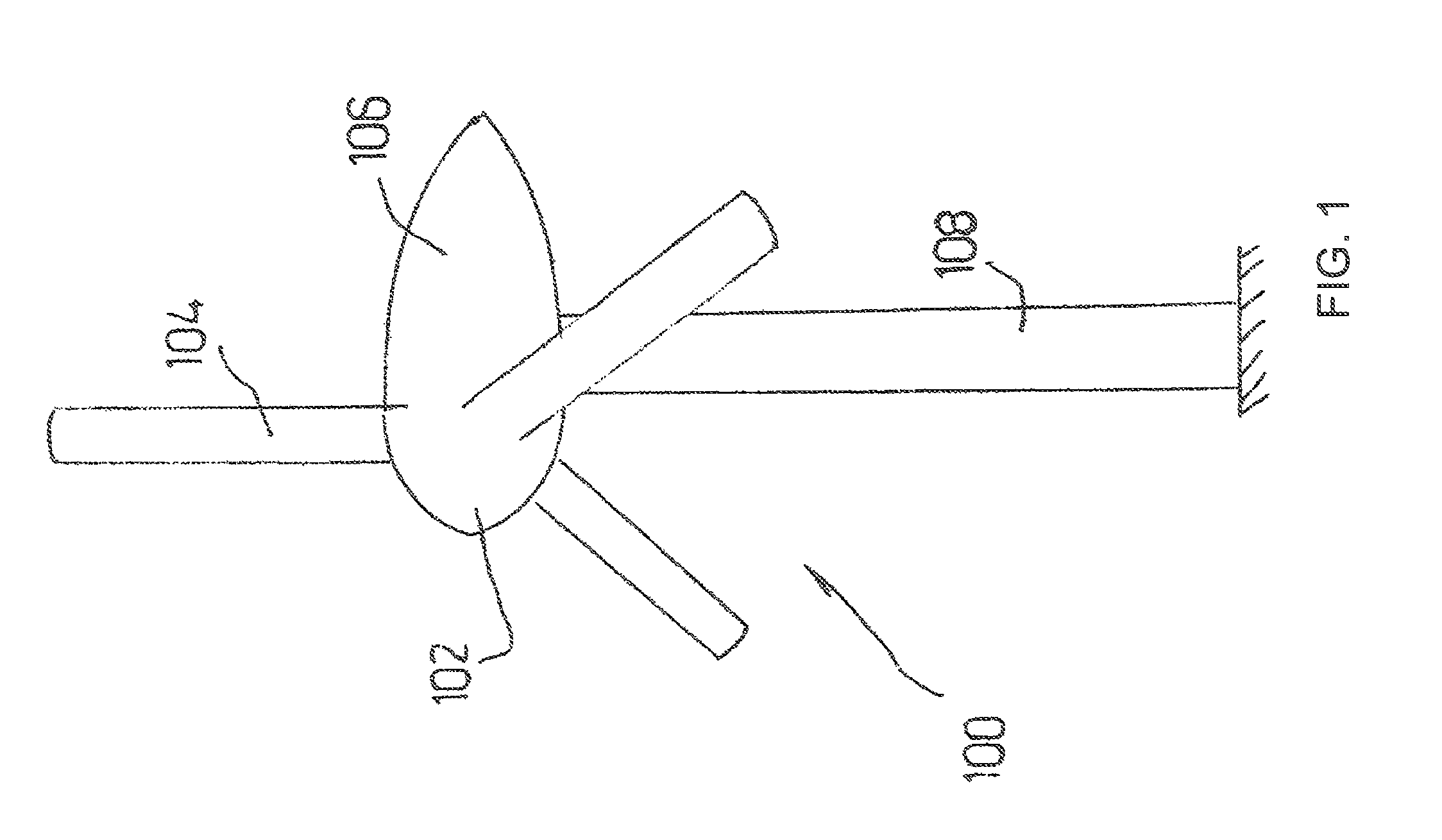Wind power generation system
a power generation system and wind turbine technology, applied in wind motors, wind motors with parallel air flow, motors, etc., can solve the problems of lateral flow and flow separation from the low pressure side of the blade, high tip speed, and high material strength of the blade, so as to reduce the rotational moment of inertia, reduce the stall characteristics of the blade, and reduce the stall speed
- Summary
- Abstract
- Description
- Claims
- Application Information
AI Technical Summary
Benefits of technology
Problems solved by technology
Method used
Image
Examples
Embodiment Construction
[0025]The invention summarized above and defined by the enumerated claims may be better understood by referring to the following detailed description, which should be read with the accompanying drawings. This detailed description of particular preferred embodiments of the invention, set out below to enable one to build and use particular implementations of the invention, is not intended to limit the enumerated claims, but rather, it is intended to provide particular examples of them. Furthermore, there is no intent to be bound by any expressed or implied theory presented in this application.
[0026]Typical embodiments of the present invention reside in a wind-power electrical generation system providing a greater ability to capture kinetic energy from wind. With reference to FIGS. 1 to 3, a first embodiment of a wind-power electrical generation system 100 includes a hub 102 or nose cone which houses various electrical and mechanical turbine components. A blade group, including one or ...
PUM
 Login to View More
Login to View More Abstract
Description
Claims
Application Information
 Login to View More
Login to View More - R&D
- Intellectual Property
- Life Sciences
- Materials
- Tech Scout
- Unparalleled Data Quality
- Higher Quality Content
- 60% Fewer Hallucinations
Browse by: Latest US Patents, China's latest patents, Technical Efficacy Thesaurus, Application Domain, Technology Topic, Popular Technical Reports.
© 2025 PatSnap. All rights reserved.Legal|Privacy policy|Modern Slavery Act Transparency Statement|Sitemap|About US| Contact US: help@patsnap.com



